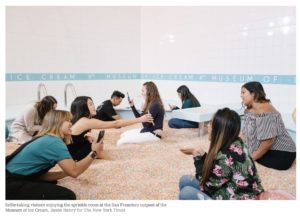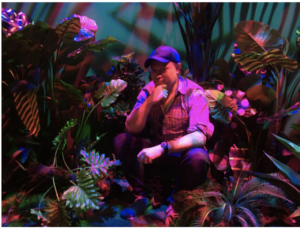News
Is Instagram destroying the art world or making it better?

- March 13, 2019
- Updated: July 2, 2025 at 5:13 AM


From coffee to cocktails to culture, the Instagram-friendly business is everywhere.
Marked by cool accent walls, big bold quotes, and pops of color, these functional pop-ups have transformed the dining scene, museum culture, and really, how we interact with the world.
Is that a good thing? Is everything we value now tied up into the quality of photograph we end up with?
What happens to comfort food that looks messy on the ‘gram? Or meaningful art that requires IRL observation?
Experiencing…what?
This past year or so, we’ve started to see more examples of pop-ups created for the sheer purpose of being captured on camera—Refinery 29’s 29 Rooms, the Color Factory, the Museum of Ice Cream, the Museum of Selfies, and Candytopia are the more popular examples.
View this post on Instagram
A few years back, regular museums became social media stars — but we’ve removed the pretext of “culture” and started approaching the museum in, we suppose, a more honest way.
Museums featuring, oh anything by Yayoi Kusama still attract big crowds. But the concept has been distilled down to the essence — these pop-up experiences that remove the didactics and docents from the equation. It’s all about the ‘gram, baby.
Art on the wall has been replaced by the interactive ball pit, human-sized egg cartons, and branded #content decked out in bright colors.
In any case, it’s becoming easy to create an installation with some whimsical elements, and watch people pay to wait in line and promote that experience on social media.
View this post on Instagram
Business is defined by performance
In this pay-to-pose world, exhibits need to photograph well or people just won’t come. Because the experience is second to the photos captured during the experience.

That’s fair when it comes to say, tracking online stores or even offline businesses like restaurants and coffee shops, which have always relied on ambiance or charm to keep customers coming back.
With food, we do have a natural tendency to “order with our eyes” so there’s no doubt that food needs to appear appetizing.
Where it gets a little murky is when you start to think about art, in the traditional sense. Some art doesn’t photograph well, but is something to behold, in person. With food, you’re seeing chefs who create food that looks good on Instagram, sometimes at the expense of taste.
Eggslut’s Alvin Cailan told Eater he was done playing into the Instagram culture — but it’s worth pointing out that the runny egg-focused restaurant already had a cult following in Los Angeles. Those just getting started have to play the game, at least if they want to be commercially successful.
Additionally, when you put the experience first, how do things like meaning and making a statement come into play?

Top 5 apps that’ll make you an Instagram model
Read Now ►What does the art world think of the so-called “Instagram Trap?”
Artnet featured a piece by critic Ben Davis who wrote about the Instagram playground Dream Machine for the magazine. He mentions that some elements seemed “dumpy” in real life, but photographed quite well — Davis describes the experience as being something that looks like art, but at the same time, defeats the normal approach to art.

He further explains this by saying, the experience is secondary to the photos collected (a higher brow Pokemon Go?), participation trumps observation (a hallmark of the art criticism process), and individual experience matters less than the social experience.
AdWeek offered an interesting take on how brands have moved from considering the role of social media at events and establishments to building everything around social media.
It wasn’t so much a criticism of social optimization, but they point to the need for brands to create meaningful experiences — i.e. more than an opportunity to stand in line to take a photo.
Grace is a painter turned freelance writer who specializes in blogging, content strategy, and sales copy. She primarily lends her skills to SaaS, tech, and digital marketing companies.
Latest from Grace Sweeney
You may also like
 Article
ArticleA Greener Web and Cleaner Oceans: Why So Many Are Switching to Wave Browser
Read more
 News
NewsThe former creative director of Assassin's Creed is clear: the future of AAA games is smaller teams
Read more
 News
NewsGoogle will compensate for purchases made on the Play Store during these years
Read more
 News
NewsIf you are waiting for 007 First Light, you should know that half of the Steam computers won't be able to run it
Read more
 News
NewsWhatsApp wants to test nicknames in its new update
Read more
 News
NewsMicrosoft wants making links in Word easy after 30 years
Read more
